Aperture's Blog, page 148
October 16, 2015
Amy Elkins Featured on Wired
2014 Aperture Portfolio Prize winner, Amy Elkins’ series Black Is the Day, Black Is the Night featured on WIRED.com.
The post Amy Elkins Featured on Wired appeared first on Aperture Foundation NY.
October 15, 2015
John Gossage: Photographs in Books, the Complete Story
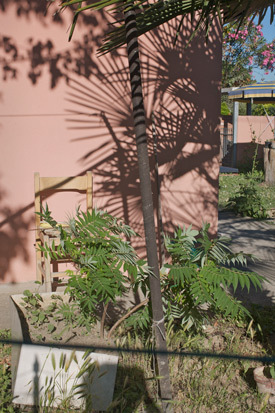
John Gossage from pomodori a grappolo (2015)
Join John Gossage the do-it-all photographer, book designer, production manager, and publisher, for a two-day workshop that will guide participants through the process of producing a photobook, from conception to completion. Students will learn how to navigate various decisions, ranging from creative, aesthetic choices to budgetary options, while developing a photographic project into book form. Gossage will present an overview of the photobook-making process and lead conversations about specific books brought in by the participants. He will then review each participant’s proposed book project while engaging the group in discussion.
Gossage will be joined by Aperture’s senior editor, Denise Wolff, for a conversation about how Aperture develops its publications and how its editors work with photographers. A few other special guests will stop by throughout the weekend to share their insights on photobook-making. Working step-by-step through the process of creation, with personalized advice, each participant will come closer to finalizing his or her photobook.
Participants are required to bring a proposed book project at any stage of completion, from a group of pictures to a completed mock-up, as well as a photobook they admire, to share with the group for discussion. Lunch and light refreshments will be served both days.
John Gossage (born in New York, 1946) is based in Washington, D.C. His photographs have been featured in numerous solo and group exhibitions over the past forty-five years. His many one-person exhibitions have included The Better Neighborhoods of Greater Washington, Corcoran Gallery of Art, Washington, D.C., 1976; Gardens, Leo Castelli Gallery, New York, 1978; Photographs of Berlin, Cleveland Museum of Art, 1989; LAMF, Sprengel Museum, Hannover, Germany, 1990; One Work in 39 Parts, Saint Louis Art Museum, 1994; There and Gone, Sprengel Museum, Hannover, 1998; The Romance Industry, Comune di Venezia, Venice, 2003; Berlin in the Time of the Wall, Galerie Zulauf, Freinsheim, Germany, 2005; and The Pond, Smithsonian American Art Museum, Washington, D.C., 2011. An exhibition at the Art Institute of Chicago is currently in preparation.
Gossage is regarded as one of the finest American photobook-makers of the last forty years. In 2010, Aperture reissued his monograph The Pond (1985) in a twenty-fifth-anniversary edition. Gossage’s other notable works include Stadt Des Schwarz (1987); LAMF (1987); There and Gone (1997); The Things That Animals Care About (1998); Hey Fuckface (2000); Snake Eyes (2002); Berlin in the Time of the Wall (2004); Putting Back the Wall (2007); The Secrets of Real Estate (2008); The Thirty-Two Inch Ruler/Map of Babylon (2010); and pomodori a grappolo (2015).
In 2002, Gossage started his own publishing company, Loosestrife Editions. He is represented by the Stephen Daiter Gallery in Chicago, and his work is included in major public and private collections.
Tuition: $500 ($450 for currently enrolled photography students and Aperture Members at the $250 level and above)
Registration ends Sunday, November 29
Register here
Contact education@aperture.org with any questions.
General Terms and Conditions
Please refer to all information provided regarding individual workshop details and requirements. Registration in any workshop will constitute your agreement to the terms and conditions outlined.
Aperture workshops are intended for adults 18 years or older.
If the workshop includes lunch, attendees are asked to notify Aperture at the time of registration regarding any special dietary requirements.
Release and Waiver of Liability
Aperture reserves the right to take photographs or videos during the operation of any educational course or part thereof, and to use the resulting photographs and videos for promotional purposes.
By booking a workshop with Aperture Foundation, participants agree to allow their likenesses to be used for promotional purposes and in media; participants who prefer that their likenesses not be used are asked to identify themselves to Aperture staff.
Refund/Cancellation Policy for Aperture Workshops
Aperture workshops must be paid for in advance by credit card, cash, or debit card. All fees are non-refundable if you should choose to withdraw from a workshop less than one month prior to its start date, unless we are able to fill your seat. In the event of a medical emergency, please provide a physician’s note stating the nature of the emergency, and Aperture will issue you a credit that can be applied to future workshops. Aperture reserves the right to cancel any workshop up to one week prior to the start date, in which case a full refund will be issued. A minimum of eight students is required to run a workshop.
Lost, Stolen, or Damaged Equipment, Books, Prints Etc.
Please act responsibly when using any equipment provided by Aperture or when in the presence of books, prints etc. belonging to other participants or the instructor(s). We recommend that refreshments be kept at a safe distance from all such objects.
The post John Gossage: Photographs in Books, the Complete Story appeared first on Aperture Foundation NY.
October 14, 2015
On Venice ’79
For Redux, Aperture magazine’s regular column on rediscovered books and writings on photography, we look at the catalogue that accompanied a one-time, photography-only biennial. This article appeared in Issue 17 of the Aperture Photograph App. It originally appeared in Aperture magazine #220, Fall 2015, “The Interview Issue.”
By Lyle Rexer
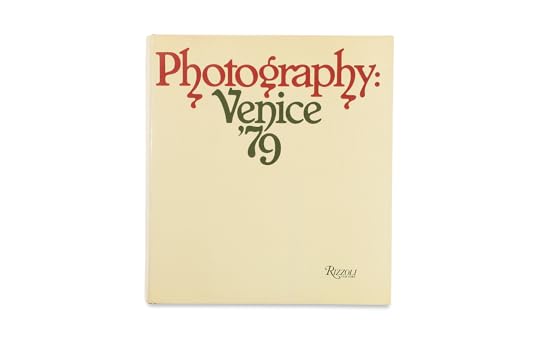
Cover of Photography: Venice ’79 (Rizzoli, 1979)
In 1979, Venice discovered photography—then turned its back on the medium. In a possible attempt to expand the Venice Biennale brand, the municipality, assisted financially by UNESCO and programmatically by the International Center of Photography, installed one of the largest photography exhibitions ever mounted in Europe. The catalogue, Photography: Venice ’79, expressed the tentative hope that this might be “the model for future such festivals.”
Instead it was a one-off that, in retrospect, provides a revealing glimpse of where photography stood globally and the contradictions that would henceforth make any exhibition employing the generic term photography highly problematic.
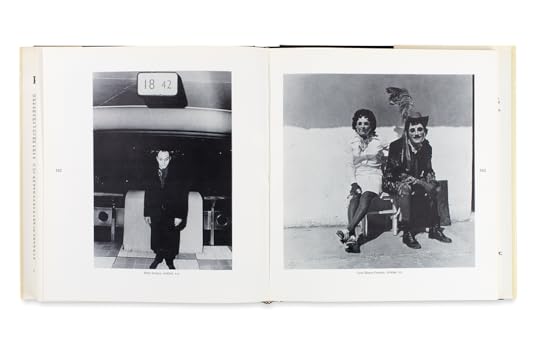
Pages from Photography: Venice ’79 including photographs by Boris Kossoy and Carlo Bianco Fuentes
Like its off-year scheduling between two art biennials, photography’s position at the time might be described as “between”—between art and technology, between expression and documentation, between politics and personal vision. These familiar dichotomies in photographic discourse (the jacket copy called them a “quarrel”) played out in twenty-five separate exhibitions that made up Venice ’79.
Looking over the table of contents, a contemporary reader recognizes the presentation not as a survey of photography in general but rather an argument for expressive art photography. In the words of Carlo Bertelli, one of the organizers, it was “an effective view of a continuity which has to be taken into account.” But what continuity? Exhibitions devoted to Alfred Stieglitz, Henri Cartier-Bresson, Robert Frank, and Diane Arbus emphasized their “mastery” and “consummate artistry,” but so did exhibitions devoted to work by Weegee, Lewis Hine, and Eugène Atget, none of whom thought of himself as an artist working in any sort of formal tradition or continuum.
As critics of the time were beginning to point out, such an approach to the history of photography was selectively enfranchising to a high degree. The issue was not (and is not) that some photographers are chosen and some are banished from a pantheon, but that even in a sprawling exhibition like Venice ’79, the complex, polyglot character and usages of photography are sacrificed to ideas about what constitutes photographic art. After all, arty gestures and decisions are common in every area of photography, from fashion photography to snapshots. A more illuminating overview might have shown how photographers of many different kinds communicate with their audiences through choices that enable them to negotiate meaning. But such an approach would have opened the gates to a tide of pictures from vernacular and commercial sources.
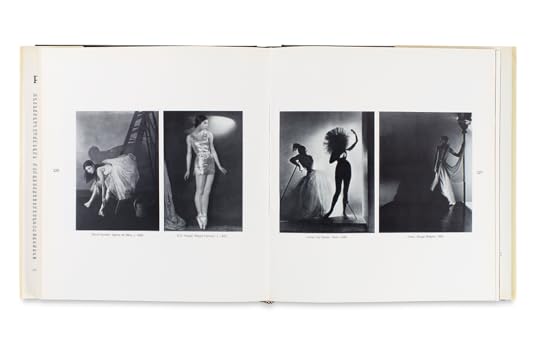
Pages from Photography: Venice ’79 including photographs by Soichi Sunami, E.O. Hoppé, and Horst
Likewise, by 1979 there were many artists and photographers adopting critical and interrogative approaches to photography. Few of them were included in Venice ’79. Lucas Samaras, Ugo Mulas, Robert Heinecken, and Joan Fontcuberta were the most prominent conceptualists. Perusing the catalogue, my favorite is Marialba Russo, a photographer previously unknown to me. Her sequence, in both black and white and color, shows a fake childbirth on a southern Italian street. The baby is a doll and the mother a swarthy, bearded man in a dress. Shot in a frenzied style, it comments not only on the documentary mode (exemplified in Venice by exhibitions of work by W. Eugene Smith and Robert Capa) but also on the political issues of class and regional division.
Politics always complicates discussions of what is and is not art, especially in photography, where pictures are so often used for propaganda. One of the most important of Venice ’79’s exhibitions, Hecho en Latinoamérica (Made in Latin America), demonstrated the force of photography as political witness but also the confusions of a theory and an exhibition that sought to define photography in expressive and formal terms. On the one hand, this collection of three hundred works by photographers from across the region, originally assembled for an exhibition by the Consejo Mexicano de Fotografía, constituted a bid for artistic recognition by marginalized countries.
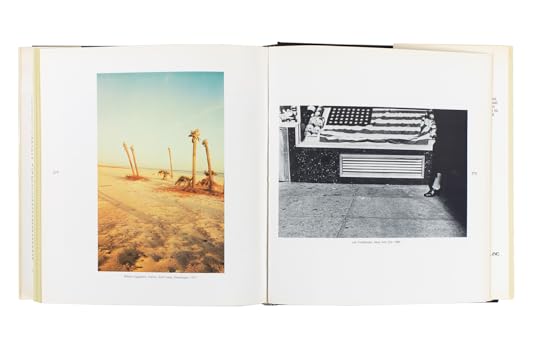
Pages from Photography: Venice ’79
It was the largest selection of such photographs to appear in Europe, and it contained the work of many great artists, including Graciela Iturbide from Mexico, Fernell Franco and Carlos
Caicedo from Colombia, and Geraldo de Barros from Brazil. On the other hand, the introduction by Raquel Tibol dismisses art photography in favor of documentary work—but then turns
contemptuously on mere “mimetism.” She demands that the work be anchored in social realities but also in the imagination. She extols mechanical modernity but decries technical perfection. Above all, she sets a wholly political agenda for photography, arguing that it should be aligned against imperialism and “oligarchic exploitation.”
This edict sanctioned works displaying both kitsch symbolism and harrowing realism. It underscored dramatically that photography serves many ends, often at the same time, and thus can’t be contained (or understood) by the boxes curators put it in. The increasing incorporation of photography into art biennials partly explains why there would be no Venice ’81. (The Venetian organizers started an architecture biennial the next year, which has continued.) More important, however, the very amplitude of Venice ’79 showed the futility of trying to say something definitive about a medium that is as fluid and ubiquitous as the water surrounding Venice.
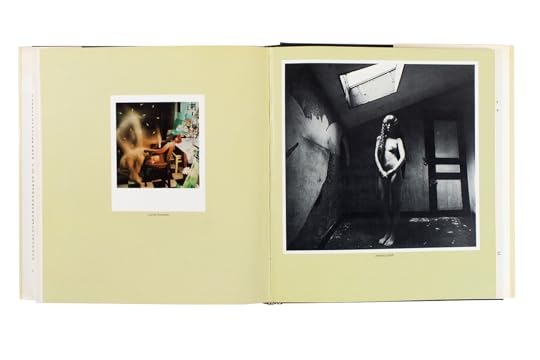
Pages from Photography: Venice ’79
Click here to find Aperture magazine on the Aperture Foundation website.
The post On Venice ’79 appeared first on Aperture Foundation NY.
Mark Seliger: Portraiture

Mark Seliger, Barack Obama, The White House, Washington, D.C., 2010
Join photographer Mark Seliger for a two-day workshop, intended exclusively for photographers who are fluent with their camera systems and are able to work with studio lighting. During the workshop, participants will receive a portfolio review, execute two portrait assignments with specific lighting combinations, and participate in a final group critique. The goal of this workshop is for participants to develop their own voices within the genre of portraiture.
On the first day, Seliger will lead a conversation about the history of photographic portraiture as it relates to the work of the participants, and discuss process, subtext, and the creation and execution of concepts for environmental portraiture. Seliger will also address technical issues and talk about problem-solving while shooting in the field. If time permits, the afternoon is reserved for group portfolio reviews.
On the second day, the participants will create teams and work together to develop a concept for portraiture. The teams will then split into two groups to create a shoot. A final critique of the assignments will follow. Light refreshments and lunch will be provided on both days. Please contact education@aperture.org with any dietary restrictions at least one week before the workshop begins.
Mark Seliger (born in Amarillo, Texas, 1959) was raised in Houston. Seliger moved to New York City in 1984, and three years later, in 1987, he began shooting for Rolling Stone. Seliger was signed as their chief photographer in 1992, and has shot over 150 covers for the magazine since. In 2001, Seliger moved to Condé Nast. He shoots frequently for Vanity Fair, Details, Italian Vogue, L’Uomo Vogue, and German Vogue. His photographs have been exhibited in museums and galleries, and he has published numerous books, including Listen (2010), In My Stairwell (2005), and Physiognomy (1999). Seliger is the recipient of the Alfred Eisenstaedt Award, the Lucie Award for Outstanding Achievement in Portraiture, and a Clio Grand Prix.
Tuition: $500 ($450 for currently enrolled photography students and Aperture Members at the $250 level and above)
Registration ends Sunday, January 10.
Contact education@aperture.org with any questions.
Register here
General Terms and Conditions
Please refer to all information provided regarding individual workshop details and requirements. Registration in any workshop will constitute your agreement to the terms and conditions outlined.
Aperture workshops are intended for adults 18 years or older.
If the workshop includes lunch, attendees are asked to notify Aperture at the time of registration regarding any special dietary requirements.
Release and Waiver of Liability
Aperture reserves the right to take photographs or videos during the operation of any educational course or part thereof, and to use the resulting photographs and videos for promotional purposes.
By booking a workshop with Aperture Foundation, participants agree to allow their likenesses to be used for promotional purposes and in media; participants who prefer that their likenesses not be used are asked to identify themselves to Aperture staff.
Refund/Cancellation Policy for Aperture Workshops
Aperture workshops must be paid for in advance by credit card, cash, or debit card. All fees are non-refundable if you should choose to withdraw from a workshop less than one month prior to its start date, unless we are able to fill your seat. In the event of a medical emergency, please provide a physician’s note stating the nature of the emergency, and Aperture will issue you a credit that can be applied to future workshops. Aperture reserves the right to cancel any workshop up to one week prior to the start date, in which case a full refund will be issued. A minimum of eight students is required to run a workshop.
Lost, Stolen, or Damaged Equipment, Books, Prints Etc.
Please act responsibly when using any equipment provided by Aperture or when in the presence of books, prints etc. belonging to other participants or the instructor(s). We recommend that refreshments be kept at a safe distance from all such objects.
The post Mark Seliger: Portraiture appeared first on Aperture Foundation NY.
October 13, 2015
Mark Klett: Traveling the Devil’s Highway—Exploring the Borderlands of the Sonoran Desert, Arizona


Mark Klett, Sunrise Near Raven Butte, Gila Mountains, 2014


Mark Klett, Saguaro trunk at dawn, 2013


Mark Klett, Ocotillo and Mosque made from shipping containers, “Combat Village,” Marine Training camp in the Copper Mountains, 2013


Mark Klett, Bighorn sheep through border fence, looking into Mexico, 2015


Mark Klett, Faint trail, granitic mountains near Raven Butte, 2013

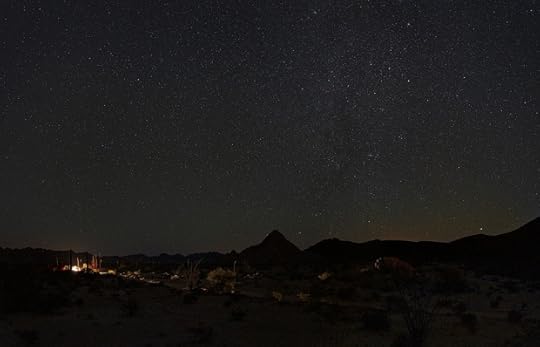
Mark Klett, Border patrol “cutting sign,” near midnight, el Camino del Diablo, 2013
Join photographer Mark Klett for a seven-day field workshop and camping expedition that will revisit a legendary landscape during a new century. Klett will guide the group through the heart of the Camino del Diablo, or the Road of the Devil, which crosses mountains and basins as it winds through the lush desert landscape in the borderlands of the Sonoran Desert in Arizona. This trip is designed for photographers who can work independently yet participate within a group setting, and who like outdoor adventure.
In 1861, a young mining engineer named Raphael Pumpelly had traveled the Camino, which was so rugged that only the most intrepid of travelers dared to cross. He famously described it in his book Across America and Asia (1870) as an arid landscape of incredible beauty, which was home to some of the greatest biodiversity and spectacular desert scenes on the continent. Today the same road is still accessible, and the landscape is as magnificent and wild as it has been for centuries. The route traverses open desert, mountain ranges, a military bombing range, and a national wildlife refuge. The landscape reveals its human history in the form of artifacts from military occupation, human migration, and centuries of native cultures that predate Anglo settlement in the region.
The workshop will include a portfolio review at the beginning, and a review of work created during the excursion at the end. Participants will meet in and depart from Phoenix, Arizona, and travel by car to the field region. They will then drive the Camino and camp for three nights in the wild and undeveloped desert landscape. The workshop will provide participants with the opportunity to make new photographic work in this unique location. It will be a group experience with ample opportunities for individual exploration. The route will take participants close to the border of Mexico, to the edge of the Cabeza Prieta National Wildlife Refuge, and across the Barry M. Goldwater bombing range. The goal is to explore a place of natural beauty and compelling human history.
Please view the itinerary for a day-to-day schedule.
Mark Klett is Regents’ Professor of Art and Distinguished Sustainability Scholar at Arizona State University. He is a photographer whose background includes working as a geologist before turning to art practice. His photographic projects span a period of more than thirty-five years, and as the chief photographer for the Rephotographic Survey Project (1977–79), he established his artistic perspective on the American Western landscape by rephotographing Western sites first visited in the 1860s.
Klett has received fellowships from the Guggenheim Foundation, National Endowment for the Arts, Pollock-Krasner Foundation, Buhl Foundation, and Japan–United States Friendship Commission. His work has been exhibited and published in the United States and internationally, and his work is held in over eighty museum collections worldwide. He is the author of fifteen books, including Reconstructing the View: the Grand Canyon Photographs of Mark Klett and Byron Wolfe (2012), The Half Life of History (2011), Saguaros (2007), After the Ruins (2006), Yosemite in Time (with Byron Wolfe and Rebecca Solnit, 2005), Third Views, Second Sights (2004), Revealing Territory(1990), and Second View: The Rephotographic Survey Project (1984).

Currently enrolled photography students and Aperture Members at the $250 level and above receive a 10% discount on workshop tuition. To learn more about becoming a member of Aperture, please visit: aperture.org/join.
If you are interested in participating in this workshop, please complete the application below. Once you have completed the application you will be contacted by Aperture with further instructions regarding how to complete the $500 non-refundable deposit. Please note: your registration is NOT complete until the $500 non-refundable deposit has been processed by Aperture Foundation.
Tuition must be paid in full by February 1, 2016.
Please be sure to review our terms and conditions before completing the application. By submitting the application, you agree to all of the terms and conditions including the our cancellation policy.
If you have any questions please contact education@aperture.org with any questions.
Fill out my online form.
Fill out my Wufoo form!
Review terms and conditions.
The post Mark Klett: Traveling the Devil’s Highway—Exploring the Borderlands of the Sonoran Desert, Arizona appeared first on Aperture Foundation NY.
October 12, 2015
Bill Armstrong: The Secrets of Color in Photography

Bill Armstrong, Untitled (Film Noir #1433), 2012
“I recommend Bill Armstrong’s color workshop 100%. His understanding of color in photography is unparalleled … He is a working artist who understands and can talk about his medium. My experience of his class was incredibly valuable and full of insights.”
— W.M. Hunt
Join photographer Bill Armstrong for a two-day workshop designed for photographers of all skill levels who would like to learn the aesthetic principles behind creating strong color photographs. The workshop will focus on how to unleash the power of color to for maximum impact. Exploring both the technical and aesthetic aspects of color, Armstrong will examine such topics as the spectrums of light and color; how the eye perceives color; contrast and harmony; color and time of day; and the psychology and symbolism of color. Through lecture, visual presentations and hands-on exercises students will gain a core understanding of how color works, which will improve their technical ability to shoot and print. Light refreshments and lunch will be provided on both days. Please contact education@aperture.org with any dietary restrictions at least one week before the workshop begins.
Bill Armstrong is a fine art photographer whose work is represented by ClampArt in New York, Hackelbury in London and numerous galleries across the country and in Europe. His work is also shown in various museum collections including the Vatican Museum, the Victoria & Albert Museum, Philadelphia Museum of Art, Brooklyn Museum, Houston Museum of Fine Arts, and the Bibliotheque National de France. Armstrong also teaches at the International Center of Photography and the School of Visual Arts.
Tuition: $500 ($450 for currently enrolled photography students and Aperture Members at the $250 level and above)
Registration ends Sunday, March 6.
Contact education@aperture.org with any questions.
Tuition: $500 ($450 for currently enrolled photography students and Aperture Members at the $250 level and above)
Register here
General Terms and Conditions
Please refer to all information provided regarding individual workshop details and requirements. Registration in any workshop will constitute your agreement to the terms and conditions outlined.
Aperture workshops are intended for adults 18 years or older.
If the workshop includes lunch, attendees are asked to notify Aperture at the time of registration regarding any special dietary requirements.
Release and Waiver of Liability
Aperture reserves the right to take photographs or videos during the operation of any educational course or part thereof, and to use the resulting photographs and videos for promotional purposes.
By booking a workshop with Aperture Foundation, participants agree to allow their likenesses to be used for promotional purposes and in media; participants who prefer that their likenesses not be used are asked to identify themselves to Aperture staff.
Refund/Cancellation Policy for Aperture Workshops
Aperture workshops must be paid for in advance by credit card, cash, or debit card. All fees are non-refundable if you should choose to withdraw from a workshop less than one month prior to its start date, unless we are able to fill your seat. In the event of a medical emergency, please provide a physician’s note stating the nature of the emergency, and Aperture will issue you a credit that can be applied to future workshops. Aperture reserves the right to cancel any workshop up to one week prior to the start date, in which case a full refund will be issued. A minimum of eight students is required to run a workshop.
Lost, Stolen, or Damaged Equipment, Books, Prints Etc.
Please act responsibly when using any equipment provided by Aperture or when in the presence of books, prints etc. belonging to other participants or the instructor(s). We recommend that refreshments be kept at a safe distance from all such objects.
The post Bill Armstrong: The Secrets of Color in Photography appeared first on Aperture Foundation NY.
October 9, 2015
Issue 17 of the Aperture Photography App is Now Available

The new issue of the Aperture Photography App is now available to download on your iOS device. Here’s a look inside Issue 17:
● A Redux column from “The Interview Issue” of Aperture magazine about Photography: Venice ’79
● An excerpted conversation between Don McCullin and Fred Ritchin from the Summer 2009 issue of Aperture magazine
● An essay by Stanley Wolukau-Wanambwa on recent photobooks about African subjects
● A preview of images and an excerpted essay from Richard Learoyd’s recently published monograph Day for Night
● An Aperture Beat on Richard Misrach’s talk with Aperture staff about his forthcoming book, Border Cantos
Every issue of the Aperture Photography App is free– subscribers have new issues delivered to their device automatically. Select articles later appear here, on the Aperture blog. Click here to download the app today!
The post Issue 17 of the Aperture Photography App is Now Available appeared first on Aperture Foundation NY.
October 8, 2015
Archive: A Look Back at Aperture Magazine’s Fortieth Anniversary
The fall 1992 issue of Aperture magazine featured an original Robert Rauschenberg cover for the magazine’s fortieth anniversary. Inside, photographer Robert Adams interviewed Michael E. Hoffman (1942–2001), who built Aperture into a book publishing program, acted as publisher and editor of the magazine, and was the longtime director, from the 1960s through the 1990s. On the occasion of the launch of the Aperture Digital Archive, making every issue of Aperture magazine available online, appears this excerpt from that conversation, in which Hoffman speaks candidly about the early days with Minor White and Paul Strand, and about the development of Aperture.

Cover of Aperture Issue 129, with cover art by Robert Rauschenberg.
Robert Adams: In the first issue of the first volume of the magazine, in an opening statement about Aperture which is signed by [Minor] White and [Dorothea] Lange and all the rest, there is the following: “Aperture is intended to be a mature journal in which photographers can talk straight to each other.” In the early issues, there is in fact a striking and exciting willingness by photographers and writers to address fundamental issues in clear language, issues like “What are we doing?” and “What is it good for?” Do you have the sense that this directness is harder to come by now? And if so, why? And do you think there is any way around the increased academicization of photography?
Michael E. Hoffman: Think of Nancy Newhall. She was writing in a highly experiential, charged style. When you were near her and she was talking about photography and photographers, she vibrated. She was passionate. She was an intelligent, well-educated person who wrote beautifully.
I think at that time photography was life itself for people like her. They were in a process of discovery that was enormously exciting. There was no monetary support, there was no real outside interest. They were very much on their own.
What has happened today is that the academic side has overwhelmed the experiential side. A great many people have become interested in photography, but without bringing to it the qualities of engagement that force one to ask those primary questions. Instead, we get questions about style, and we get art-speak. . . . .
RA: Where and when did you first meet Minor White? And as you came to know him, what was it that most convinced you to shape your own life as you have—you’ve been working with Aperture since 1964. Was it his manner, or what he said, or his pictures, or all of this together?
MEH: I had been given a subscription to Aperture in 1957, when I was fifteen years old. At first, the magazine had no effect on me. Then, all of a sudden, one day I sat down to look at it, and three hours later I came back changed. I had never had such an experience of total immersion. It was the issue that Nancy Newhall had done on Edward Weston, at Weston’s death, called “The Flame of Recognition.”

Pages from Issue 129 of Aperture.
RA: Had you yourself been photographing?
MEH: Yes. I had been taking pictures for about seven years. As a result of my Aperture subscription, I received a notice that Minor White was giving a workshop in Denver. I had just come back from college, and I said to myself, “This is something I could do.”
When I arrived at the workshop, I found it to be quite a bohemian setting. In the room there was a tall man with a beard, rather handsome, rather formidable—and I was sure that he had to be Minor White. To the right of the door there was another man with an open white shirt and some loose-fitting trousers. He had one leg up against the wall, and I think he was wearing sandals. I said to myself, “I wish this man would leave as soon as possible, because what the hell is he standing around here for? Why not get on with this important undertaking?” Of course, the man in the white shirt was Minor White.
I had never encountered a presence like his, somebody who was so unassuming, who had a relaxed, gracious manner, who was incredibly accepting of the people in the workshop, and who appeared to radiate a quality of light. Minor had a rather deep voice and a great presence. He gave us assignments that embarrassed me: we were to stand out on a street corner, for example, and let all the traffic and the people just go by. Just stand there. A lot of what we did, I only later came to understand, were the kinds of exercises that certain religious communities utilize to train people to become more aware, more present.
At one point we even went out to a garbage dump to start photographing. I thought, this is the limit, this is the end. I was going to give it up right there, and then things began to transform themselves before my eyes. I was astonished. We processed and printed every day, and then we had sessions so that we could look at what other people were doing. It was an intensification of what I had experienced with Weston’s “Flame of Recognition.” The search seemed somehow to give life real meaning, and Minor was both a guide and an ally.
RA: How did you then get to know White better?
MEH: Well, I tried to suggest to him that I could be helpful in the workshops that he was doing in the East. I was fishing, trying to find something. He was not very open to working with anybody. He was a very private person. In any event, he did agree to let me set up a workshop at the Millbrook School, a secondary boarding school I had attended. This was very successful, and so he agreed to give a workshop at St. Lawrence University. And then, in 1964, when I graduated, he invited me to Rochester to work with him personally, which I considered a great opportunity.
Aperture had gone out of existence in early 1964, and I said to Minor that I thought it should continue. And then I met Nancy Newhall, who was very supportive, although I suspect that Minor really didn’t want to see Aperture continue.

Pages from Issue 129 of Aperture.
RA: Why was that?
MEH: He felt that he had done everything that needed doing. Aperture‘s lifetime, then, was almost equal to the span of time during which Alfred Stieglitz’s Camera Work was published—Minor felt a very great connection with Stieglitz—and he thought Aperture had come to its natural end. He also was tired of the personal attacks, the lack of support, and the isolation. He had worked without any monetary compensation. He had devoted twelve years to the magazine, and had no money except what he earned as a part-time instructor. Minor eventually agreed, and Nancy and I decided we would do an issue on Weston, because the 1958 “Flame of Recognition” issue had reached only a few people. We decided to redo it simultaneously as a book and as the first new issue of the magazine, which had been dormant for almost a year. We had no money at all, and for a number of years I received no compensation. . . .
RA: Why don’t we talk for a little about Aperture the magazine as it has evolved since White gave up his guidance of it. In recent years, there has been a shift away from issues of mixed content to issues that focus on a particular theme, and some people—I think particularly photographers—have found that the results are often less interesting to them. They point out that the thematic issues sometimes seem to begin from an idea rather than from pictures in hand, and thus, perhaps inevitably, are not as exciting visually. Photographers also would suggest, I think, that these thematic issues have tended to discourage submissions of general portfolios. This may in turn be why the magazine doesn’t seem to have as many wonderful, anomalous shots, sometimes by unknown photographers, which made some of the earlier issues of the magazine so exciting. I am interested to know how you see the pros and cons of running a schedule of thematic issues, and interested to know if the practice is one that you think is valuable enough to continue.
MEH: Well, to begin with, I think the theme idea was a predominant mode in Minor’s approach to the issues in the early years. As Aperture evolved, and because of the editors—Carole Kismaric, Larry Frascella, Mark Holborn, Nan Richardson, Chuck Hagen, all of whom are very talented, as is our current group: Rebecca Busselle, Melissa Harris, and Andrew Wilkes—there was a desire to create a more coherent framework. I think it was a reaction to the portfolio approach, which seemed quite uncreative. There was no sense of a larger vision, a larger idea with which the pictures had to interrelate, by which they had to be challenged. I think that there was a desire among the editors to touch on ideas beyond those possible in a portfolio approach. In other words, larger ideas into which photography could focus and give a larger meaning, gain a larger meaning. . . .
RA: How does an issue originate? For example, does the idea usually come from in-house? And then what is the editorial process that leads to the choice of an issue’s theme?
MEH: We wrestle with that question all the time. We’ve been blessed over the years in having some very creative people involved with Aperture, all with very different views.
Chuck Hagen, for instance, wanted to do a show called “Drawing and Photography.” And he was deeply committed to the idea of doing this as an issue of the magazine as well. I think it was a marvelous exploration. It was really a chance to explore the medium in a broad variety of ways. Four issues before that, Melissa Harris did “The Body in Question.” In between, Andrew Wilkes edited “The Idealizing Vision,” on fashion photography; then there was the issue on German photography, and “Connoisseurs and Collections.” These were very diverse, equally valid approaches to photography and the magazine.
The hope is that in four issues we are able to cover enough ground and to include enough photographers to satisfy the need for people to be shown. But we really rely on the creative juices of the editors. We just did an issue called “Our Town,” which includes photographs by a broad variety of remarkable photographers, many of whom are not known, and marvelous texts by David Byrne, Richard Ford, Michele Wallace, Gary Indiana, John Waters, Marianne Wiggins, and others. We hope that this is a way to engage photographers, but also to achieve a broad cultural reach. We try to bring in a variety of forces of our time.
Click here to find the Aperture Digital Archive on the Aperture Foundation website.
The post Archive: A Look Back at Aperture Magazine’s Fortieth Anniversary appeared first on Aperture Foundation NY.
October 7, 2015
“Breaking the Light Barrier” Workshop at Aperture Gallery


Attendees of "Breaking the Light Barrier" set up a shot. Photograph by Becca Imrich


Image courtesy of Juliana Tan, 2015.

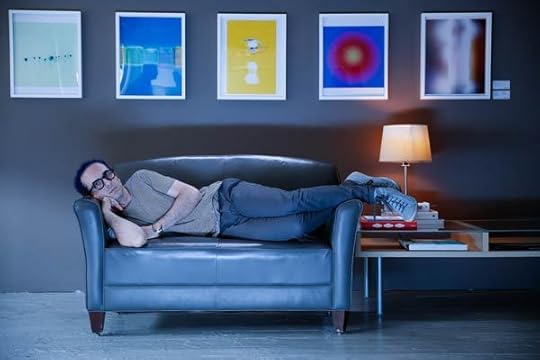
Image courtesy of Joan Lobis Brown, 2015. Two lights and filters inside the lamps were used to simulate ambient light from a television.


Image courtesy of Dale May, 2015. A combination of six lights and various filters on the windows were used to transform day to night.
By Becca Imrich
Rick Sands’s Aperture workshop “Breaking the Light Barrier,” created for photographers who want to master lighting techniques, took place at Aperture Gallery from August 29 to September 3. Aperture workshops bring students, professionals, and amateurs together with leading photographers working in a variety of fields and genres for intensive educational experiences. The next workshop at Aperture is “Mark Klett: Traveling the Devil’s Highway—Exploring the Borderlands of the Sonoran Desert, Arizona.”
Over the course of six days, workshop participants collaborated with master illuminator Rick Sands to learn how to see, understand, and realize various lighting scenarios. For nearly fifteen years, Sands, a film technician, has created elaborate lighting for the narrative photographs of artist Gregory Crewdson. His portfolio also includes thirty-five theatrically released motion pictures with directors such as Steven Spielberg and Francis Ford Coppola, forty-seven television movies, and countless one-hour television episodes. The class worked under a wide range of conditions (day as well as night, interior as well as exterior), and studied separation through use of contrast via intensity and color. Sands discussed philosophies of lighting techniques and shared his insight on the five properties of light, and how they interrelate: quality, quantity, color, shape, and direction.
The workshop was a mixture of lighting theory and hands-on practical exercises. Aperture’s Chelsea gallery was turned into a studio for participants in which they could arrange various lighting scenarios. On the second day of the workshop students were challenged to recreate a scene with complex lighting. Each participant brought in found images and worked in teams to reproduce the lighting set-up while employing techniques discussed the previous day. Some Aperture staff served as models; in the slideshow above, look out for examples of student work from the workshop and see how the gallery was transformed.
Click here to learn more about Aperture Workshops.
The post “Breaking the Light Barrier” Workshop at Aperture Gallery appeared first on Aperture Foundation NY.
October 1, 2015
Pacifico Silano, Light Work Artist-in-Residence
Pacifico Silano, 2013 Portfolio Prize runner-up to participate in 2016 Light Work’s Artists-in-Residence Program.
The post Pacifico Silano, Light Work Artist-in-Residence appeared first on Aperture Foundation NY.
Aperture's Blog
- Aperture's profile
- 21 followers



